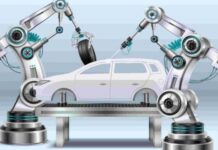Efficiency is crucial in nature. Maximizing the outlay of additional resources by using as much of it as possible improves performance, can minimize cost, and reduce waste. Energy harvesting provides a method to use ambient energy to power an electrical device. For battery-containing devices, energy harvesting can either extend the battery’s useful life or replace the battery’s energy contribution entirely.
Ultra-low-power (ULP) MCUs are a logical choice for energy harvesting. These devices exist in wearable technology, wireless sensors, and other edge applications in which extending battery life essential. It is useful to review how energy harvesting works in practice to understand the value of how energy harvesting enables ULP MCUs.
How Energy Harvesting Works
In principle, energy harvesting is a simple concept. The problem to solve is that the primary sources of energy (batteries, fuel, grid power) are finite. Also, converting this source power to usable energy is not 100 percent efficient, though there is perpetual ambient energy available for capture. This reality is why wind turbines are a renewable large-scale energy source. Turbines receive potential energy from the wind, spinning the blades around a rotor that engages a generator that produces electrical power. Other large-scale ambient energy sources include solar, oceanic waves, and geothermal heat.
Smaller-scale technology, such as wearable devices and wireless sensors, can harvest kinetic, thermal, or environmental electromagnetic radiation energy. Each of these forms uses a different mechanism to convert the source power into usable energy. Each source’s utility and practicality is an important consideration, as the application may prohibit the size and mass of equipment needed for energy conversion.
Thermal radiation is useful for wireless sensor applications, as the sensor design and placement leverages both forms of source energy. On vehicles, sensors close to the road can accept radiant heat from the blacktop. In contrast, others can leverage motion energy from high-vibration locations, such as near the wheels or engine components. For ultra-low power MCUs, kinetic energy recovered from a human user/s motion is the most practical form of energy to convert at the moment.
Opportunity for Ultra-Low Power MCUs
Because a primary application of ULP MCUs is wearable technology, processing this edge data with minimum system power consumption is critical. Energy harvesting reduces energy demand on the wearable tech’s battery, which contains a finite amount of energy and requires periodic recharging or replacement following its power depletion. Batteries also present a challenge in disposal, as battery composition materials are not easily recyclable. ULP MCU energy harvesters capture kinetic (mechanical) energy through piezoelectric, electromagnetic, or triboelectric generators.
Piezoelectric
The term “Piezoelectric” originates from Greek and translates to squeezing or pressing. The kinetic force compresses the piezoelectric material, generating an electric field. Engineers select the material based on the anticipated mechanical load and electric field density and balance its power contribution potential against the material properties, which deform the material in the presence of an electric field. These competing factors enable designers to optimize how much an energy harvester can contribute to augment the primary battery power repeatedly. Some estimates show that, on average, kinetic motion can add 10mW to the primary power source for ULP MCUs.
Electromagnetic Radiation
Another energy harvesting technology for small-scale MCUs is electromagnetic radiation. Radio, infrared, UV, and microwaves carry radiant energy through the air. The ambient electromagnetic waves vibrate structures in a magnetic field, converting the mechanical vibration energy to electrical through an intentionally-sized magnet and air-gap design. This approach contributes around 0.3mW of harvested power to the system.
Triboelectric Nanogenerators
The final conversion medium for ULP MCUs is triboelectric nanogenerators (TENGs). This technology applies [dissimilar] materials to surfaces that undergo friction from mechanical motions like rotary, vibration, oscillation, and expansion/contraction. Electrodes bracket these materials, recovering energy created through the charge imbalance (static electricity) generated by the materials rubbing together. This approach offers supplemental power 10x lower than piezoelectric, or around 1-1.5mW.
Takeaway
Wearable technology and wireless sensor networks, everyday applications of ultra-low power MCUs, consume power on the order of tens of milliwatts. Lithium-ion batteries are a great option to deliver that power over a suitable amount of time. However, cold weather sensitivity and user demand for extended battery life push the limits of the current technology. Harvesting of mechanical energy through piezoelectric, electromagnetic radiation, and triboelectric sources provides up to 10 percent of auxiliary battery life. Optimizing the technology for resistance and current loads, continued improvement to this technology could eventually remove the need for batteries in ULP MCU devices. It is a race between miniature battery development and augmented power, with the consumer poised to win either way.
About the Author:

Adam Kimmel has nearly 20 years as a practicing engineer, R&D manager, and engineering content writer. He creates white papers, website copy, case studies, and blog posts in vertical markets including automotive, industrial/manufacturing, technology, and electronics. Adam has degrees in chemical and mechanical engineering and is the founder and principal at ASK Consulting Solutions, LLC, an engineering and technology content writing firm.
















